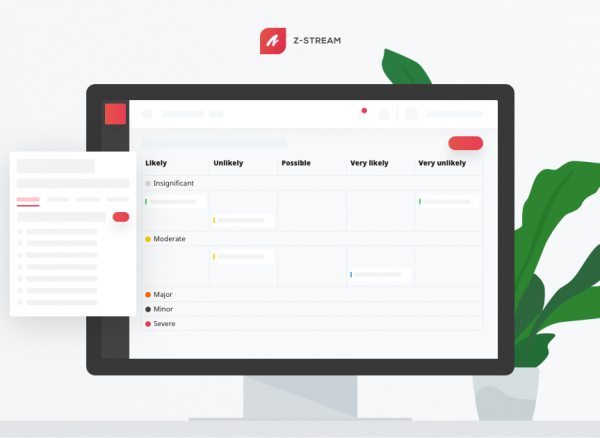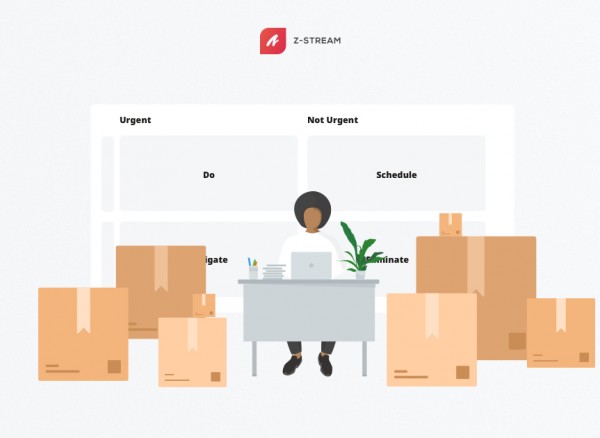
Your company doesn’t exist just to satisfy customer needs. Chances are you have key goals that you’re hoping to accomplish over the course of the next year. Are you struggling to meet these objectives? Do you need a little more help getting your business on course for the coming year? Try these five key steps for reaching your overall company goals.
Step One: Strategic Goal Planning
In order to reach your goals, you need to have a plan in place. A strategic plan will enable you to break down your objectives into key parts, which in turn will help you move forward effectively.
If you want to know how we achieve our business goals, consider the Z-Stream difference. Z-Stream offers a built-in Roadmaps feature that helps you create strategic plans to achieve your business goals. With Roadmaps, you’ll be able to start with the end objectives, then break down your plan into smaller pieces that you can accomplish throughout the development process.
Step Two: Set Employee Goals
You don’t just need goals for your business as a whole. You also need individual goals for each employee. Your employees are the heart of your business and understanding how teamwork will accomplish your business objectives is critical to your ultimate outcome. Achieving business goals doesn’t occur in isolation; rather, these ambitions are best reached when all employees work together to complete them. As you set your employee goals, try to remember these points:
– Assess employee capability. What are employees good at? Where do they need a little more work?
– Align employee goals with team goals. Teamwork helps attain big business objectives, which means that you’re in a better position to reach them when you team up.
– Determine what employees are hoping to accomplish in their own lives. Where do they hope to work in the future? What job roles would they like to fill? The better you understand your employees, the better you’re positioned to help them set up key personal objectives that go along with your business goals.
Each employee has a role to play in your overall business strategy. When you set key employee goals, you’re better able to achieve your business goals and watch your business flourish.
Step Three: Define Your Business’s Purpose
In order to learn how to set business goals and achieve them, you must be able to define what your business has set out to accomplish. Your organization is there to help with specific customer needs, provide customers with support, and work with others in your industry. Ask yourself these key questions to help you better define your company’s purpose:
– What sets it apart from your competitors? How are you different from others in your industry—and how are you like them?
– What does your business want to accomplish? How are you dealing with customer demands? What are you able to provide for your customers?
– How does your organization work as a larger part of the community? Are you contributing to a larger community’s resources?
– What is your business’s place in your industry? How are you contributing to the overall success of any changes in your industry?
When you understand the purpose of your business, you can create targets and objectives that will help you fulfill that purpose. Aligning your smaller goals with your overall motivation will help ensure that you don’t miss out on key opportunities to advance your business.
Step Four: Set S.M.A.R.T. Goals
When you’re ready to set your business targets, do you know how to set them effectively? Setting S.M.A.R.T. goals can increase the odds that you’ll reach your overall objectives. S.M.A.R.T. goals are:
Specific: You don’t want your objectives to be vague. Specific goals are easier to understand and work toward.
Measurable: In order to determine whether or not you are reaching your goals, you need to be able to measure them. How do you know you have achieved your goal? Be it increasing your sales this year or improving your impact, making your objectives measurable allows you to easily watch progress along the way.
Attainable: Some goals are simply out of reach for your company as it is right now. A small company, for example, is unlikely to become a massive one over the course of a single year. When you set your objectives, make sure that it’s something that’s really in reach.
Relevant: Is your goal actually relevant to your business? It’s easy to get caught up in the lists of goals you can find online, simply checking them off the list. One of the most effective strategies for achieving business goals, however, is ensuring that those objectives are actually relevant—that is, that they’ll have a genuine impact on your business. Make sure you know exactly why a particular target has to be met.
Time-bound: How long do you have to achieve your goals? While you may need to be flexible in your deadlines, setting a specific time when you’d like certain targets to be met will help you achieve your business goals more effectively. If you don’t want those goals to go unmet, make sure you have a deadline that everyone understands.
As you set your S.M.A.R.T. goals, Z-Stream can help you reach them. In Z-Stream, you can use the Tasks feature to indicate which members of the team are supposed to work on specific areas of a given project, helping them align with the project’s overall objectives. When employees understand the ultimate goal of a project, they are more likely to produce the outcomes you want. You can also use the Tasks feature to set priorities, attach files, and set deadlines that are in line with your S.M.A.R.T. goals.
Step Five: Leverage the 80/20 Rule
The 80/20 Rule in goal setting is what can help you achieve more with less. When used in management, the approach makes it easy to set key goals for your business by defining which goals are most important and will have the greatest impact. According to the 80/20 rule, 20% of your objectives will accomplish a larger percentage of your success. Start by writing down 10 goals. Then, arrange them in order of priority, with the goals that will have the most lasting impact at the top. Once you’ve defined those key objectives, you’ll know where 80% of your effort needs to go.
The 80/20 Rule also states that 20% of your customers will be responsible for approximately 80% of your sales. Moreover, the top 20% of those high-spending customers, that is the top 4% of your overall sales, represent 80% of the sales within that original 20%. This means that they’re making 64% of the overall purchases for your business.
The same is true for your employees. Often, 20% of your employees will do 80% of the high- performing work within your business. These employees are the ones with the best ideas, the best strategies, and the best teamwork. They’ll work hard on the strategies that are designed to achieve key objectives in your business, and they’ll support you in achieving your overall business goals.
In order to make the most of your business and achieve more strategic business goals, it’s important to define that 20%. What is it that makes your top 20% of customers purchase more from your business? What makes that top 20% of your employees more effective and more efficient than the other 80%? When you clearly define those highly effective employees and customers, you’re better able to seek out more of them. You’ll understand their characteristics, how to reach out to them, and their needs and requirements. When you know the top 20% of your employees, you can more effectively motivate other employees and provide them with the tools they need to help advance your business’s overall goals. The better you get to know your top 20%, the better you can shape your business objectives and strategies around what’s already working for you.
These strategies for achieving your business goals are the perfect tools for adding to your business in the coming year. You need solid, attainable objectives that are within the realm of what your business can actually accomplish in order to push your business forward and truly delight your customers.
Luckily, Z-Stream can offer many useful tools that will help you achieve your business goals. When you use Z-Stream, you’ll be able to better organize your business objectives, keep track of each employee’s responsibilities, and leverage individual accomplishments and team success to help you move forward with your overall plans.
It’s time to stop setting impossible goals and start working toward realistic, manageable goals for your business.





